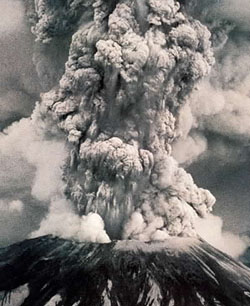 |
Vol. 8, No. 4 October-December 2002
|
Albay Province, Philippines: Coexisting with Mayon Volcano and Countermeasures for Disaster Preparedness Mayon Volcano and Its Threats
The earliest recorded eruption of Mayon Volcano was on 19 February 1616 and the last was in 2001. Although the volcanic activity has resulted in billions of pesos in damage to property and life, Mayon Volcano is of great benefit to the people of the Philippines. It has made the soil fertile and suitable for cultivation. Good quality sand and gravel has been a boon to the construction industry. This has led to human settlement around the volcano, increasing people’s vulnerability to the risks of an eruption. The most threatening effect is pyroclastic flow traveling downhill at about 300 km an hour. During the 2 February 1993 eruption alone, 77 people died out of 104 directly hit by the flow. Mudflow is not as life-threatening, but it causes tremendous damage. Large boulders and sand cover farmlands, destroy crops and affect forests and wildlife. Upland fisheries, farmland and livestock are destroyed by ashflow which covers the ground and leaves a thick ash cloud. Other volcanic hazards are volcanic quakes, rockfalls, volcanic avalanches, lava flows and tsunami. Countermeasure plans must take all of these effects into consideration. Preparedness and Mitigation In the event of volcanic threat, farmers and residents are advised to avoid any human activity within the six-kilometer-radius permanent danger zone, designated by the Philippine Institute of Volcanology and Seismology (PHIVOLCS), and the extended seven-to-eight-kilometer high-risk zone in the southeast quadrant of the volcano. PHIVOLCS has established five Alert Level Warnings. Corresponding to these levels, the Albay Provincial Disaster Coordinating Council (PDCC), through the Provincial Public Safety and Emergency Management Office (PPSEMO), devised preparedness and mitigation measures and action plans. The institutionalization of the Albay PPSEMO facilitates the implementation of disaster management initiatives described below. This resulted in zero casualties during the super typhoons in 1995 and 1998, and two consecutive eruptions of Mayon Volcano in 2000 and 2001.
Cedric D Daep is Department Head of the Provincial Disaster Management Office, Albay, Philippines. He can be contacted at cdd@mayon.cats.edu.ph |
| Newsletter | Disaster Links | ADPC Home |
Partnerships, Development and Information Research Division
Asian Disaster Preparedness Center
P.O.Box 4, Klong Luang, Pathumthani 12120, Thailand.
Tel: (66-2) 524-5378; Fax: (66-2) 524-5360; Email:ambika@ait.ac.th

